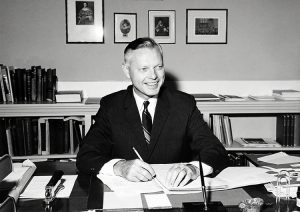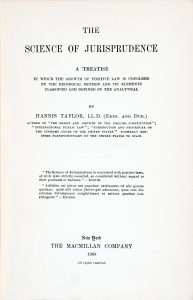Announcing a Collaborative Project between UA and UVA Law Libraries
- October 26th, 2016
- by specialcollections
- in Uncategorized

Over the past year the Litera Scripta editors and research assistants have worked with their counterparts at the University of Virginia Law Library to create a website presenting the correspondence of Daniel J. Meador (1926-2013) and his pupil Ronald Sokol. A native Alabamian and a 1951 graduate of the University of Alabama School of Law, Meador was a distinguished law professor whose service at the University of Virginia began in 1957 and continued until 1994, interrupted by a year in England as a Fulbright fellow (1965), four years as Dean of the University of Alabama School of Law (1966-1970), and two years as Assistant Attorney General for the U.S. Department of Justice (1977-1979). During most of this period Meador corresponded with his former pupil Ronald Sokol (UVA Law, class of 1962). Like Meador, an habitual student and a prolific author, Sokol has traveled the world studying languages, laws, and cultures; but most of his time since 1970 has been spent in Aix-en-Provence, where he has built up a substantial practice in French and international law. Sokol’s correspondence with Meador features discussions of politics, approaches to law (French, American, and Cambodian), and the nature and flaws of institutions, as well as insights into regional cultures, writing, and travel, and reflections upon the passage of time. Please see below for the link to the website, which is titled “The Letters of Daniel Meador and Ronald Sokol.”

